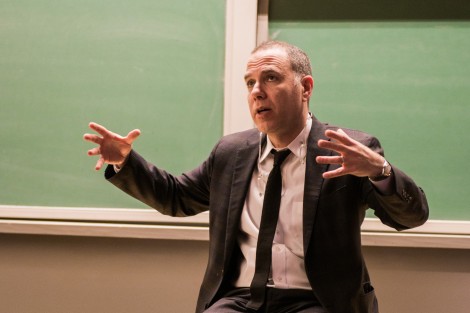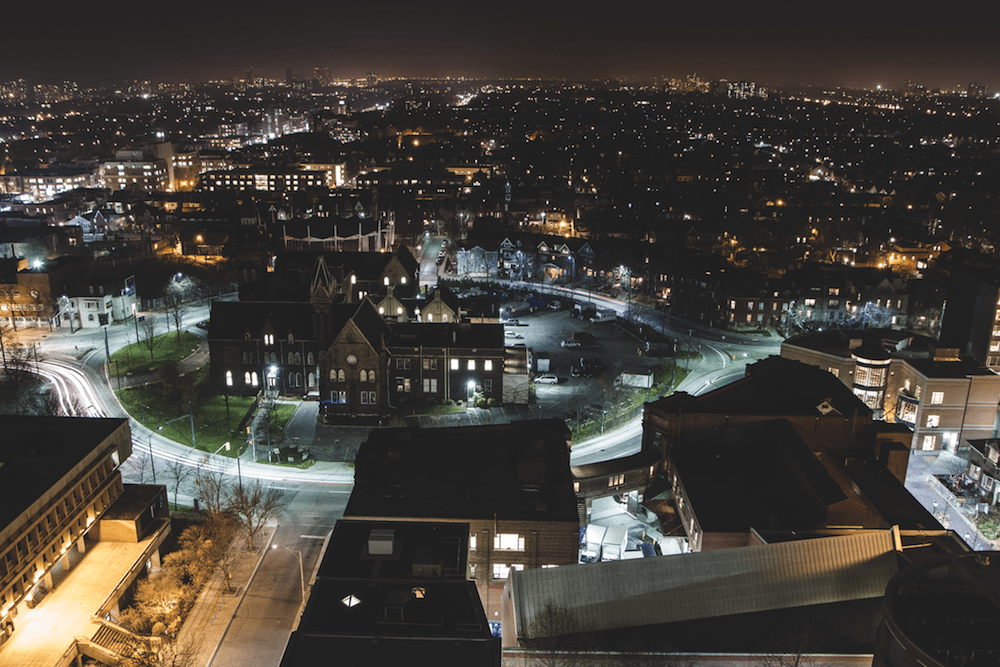Upon returning from winter vacation, more than 300 students studying for their Bachelor of Arts in Architectural Studies found themselves “homeless,” having lost prized studio space at 1 Spadina Crescent while the building undergoes a dramatic renovation. Students in the program had grown accustomed to the studio space, since moving into the historic building nearly three years ago.
Tiffany Dang, a third-year student in the program, began an online petition on change.org in late January, asking senior administrators at the John H. Daniels Faculty of Architecture, Landscape and Design to make “major changes” in their treatment of undergraduates, starting with finding “an appropriate studio space with 24-hour access and storage space to do our work.” This year, the Daniels faculty has assumed expanded responsibilities in overseeing undergraduate students in the program, many of whom had previously fallen under the jurisdiction of the Faculty of Arts & Science.
Last Thursday, the faculty convened to announce a fix: beginning next week, undergraduates will have access to temporary studio space at 665–667 Spadina Ave. The role played by Dang’s petition in reaching this resolution remains the subject of discussion within the close-knit faculty.

Dean Richard Sommer has taken a hands-on approach to resolving studio space woes. CAROLYN LEVETT/THE VARSITY
Dang’s strongly-worded petition sought to highlight the importance of studio culture to architecture students and called the loss of designated space “unacceptable” and “unreasonable.” The petition quickly found traction, gathering 221 signatories in a few short weeks.
“When we all came back in January, we thought we’d have oise as a space, but it turned out we didn’t [have] access outside class time,” said Dang in an interview with The Varsity. Dang says she brought her concerns to the dean of the faculty, Richard Sommer, who assured her that he was aware of the situation and was working to resolve it.
A few weeks went by without any news. On a late night before an impending deadline, Dang and her friends found themselves with no place to work — libraries having closed at 9 pm — and so she went home and started the petition that evening.
Dang says she knew at the time that space remains at a premium on campus, and that the faculty administration was already doing its best to work around the crunch. Still, says Dang, the faculty had known about the renovation plans for 1 Spadina for over a year. Her petition was an attempt to “expedite the process.”
Sommer, for his part, has taken a hands-on approach to resolving the situation since it came to light. He held a town hall meeting on January 17, before the petition was started, to discuss plans for the renovation. According to Sommer, at this meeting undergraduate studio space scarcely figured to be a priority for students. In a widely circulated email sent after the petition was created, Sommer wrote he was “very surprised” given the previous lack of interest in the subject.
Sommer has since pointed out that “24-hour-access space outside of class time has never been promised or guaranteed” for undergraduates. The fact that such a space had existed at 1 Spadina was simply good luck; the building had been under-utilized for years.
Administrators within the Daniels faculty credited Dang’s petition with clearly demonstrating popular demand for undergraduate studio space, and suggested it may have helped make a case to the powers-that-be for replacement space. Yet they also expressed some reservations about the approach, pointing out that some of the signatories did not appear to attend the University of Toronto, and that the issue had already been on their radar before they were broad-sided by the strongly-worded statement.
“We are small enough that student concerns about this particular issue could have been easily communicated without an internet-based petition,” said Sommer.
Sally Kassar, president of the course union for architecture students, said she was also sceptical about the efficacy of an online petition. “Although the petition might have helped speed up the process, I do not believe the approach and wording was appropriate,” said Kassar, pointing to the accusation that the faculty was treating its students like “parasites” as an example of the hyperbolic language used in the petition’s text.
Kassar says she believes the petition unfairly attacked the faculty, which was already working to resolve the issue. Kassar described speaking to a number of signatories who “mentioned that they signed the petition before fully reading it and realizing the tone in which it was addressing the topic.”
Dang defended her approach, saying she never meant the petition to be construed as an attack. “I did not intend for the petition to be an attack on the faculty,” says Dang. “It was meant as a forum for students to show that they care about their education.”
Kassar also credited the Daniels faculty administration with making significant strides in accommodating the needs of hundreds of undergraduates, who had previously fallen under the authority of the broader Faculty of Arts & Science, and just this past September been transitioned to the substantially smaller Daniels faculty. The faculty has already granted undergraduates lounge-like space in their College Street offices. The student society is active in fostering social life among students as well. Led by Kassar, they are in the process of upgrading the union constitution, planning a March formal and selling branded hoodies.
“Studio culture is essential to undergrads, and the faculty has been cognizant of their needs for a while,” said Sommer, in announcing a resolution to the problem. Sommer also recognizes the importance of providing a 24-hour space for student life: “It acts as a community hub for our students, and a place where they can not only complete their studio and design projects, but collaborate on the creative processes some of their coursework requires.
“And, of course, the opportunity to socialize is essential to building the community of Daniels‘ students.”
Ultimately, Dang is happy that the situation “got sorted out so quickly,” adding that the new space was “perfect for architects” and superior to their former lodgings. She attributes this success to the petition: “At the rate that the faculty was trying to acquire space for us, it is extremely unlikely that we would have obtained any space at all this semester. The petition simply gave the faculty just enough pressure to help us acquire space — a final push, if you will.”
With the studio problem now resolved, students and faculty alike look forward to the day when their new home at 1 Spadina is complete. “Whatever it takes, my colleagues and I want nothing more than for our students, especially our new undergraduate students, to be engaged in their program of study, and to provide the right circumstances for them to excel,” says Sommer. Early plans for the new building will integrate the original heritage structure with a state-of-the-art complex that will significantly expand the space and resources available.


